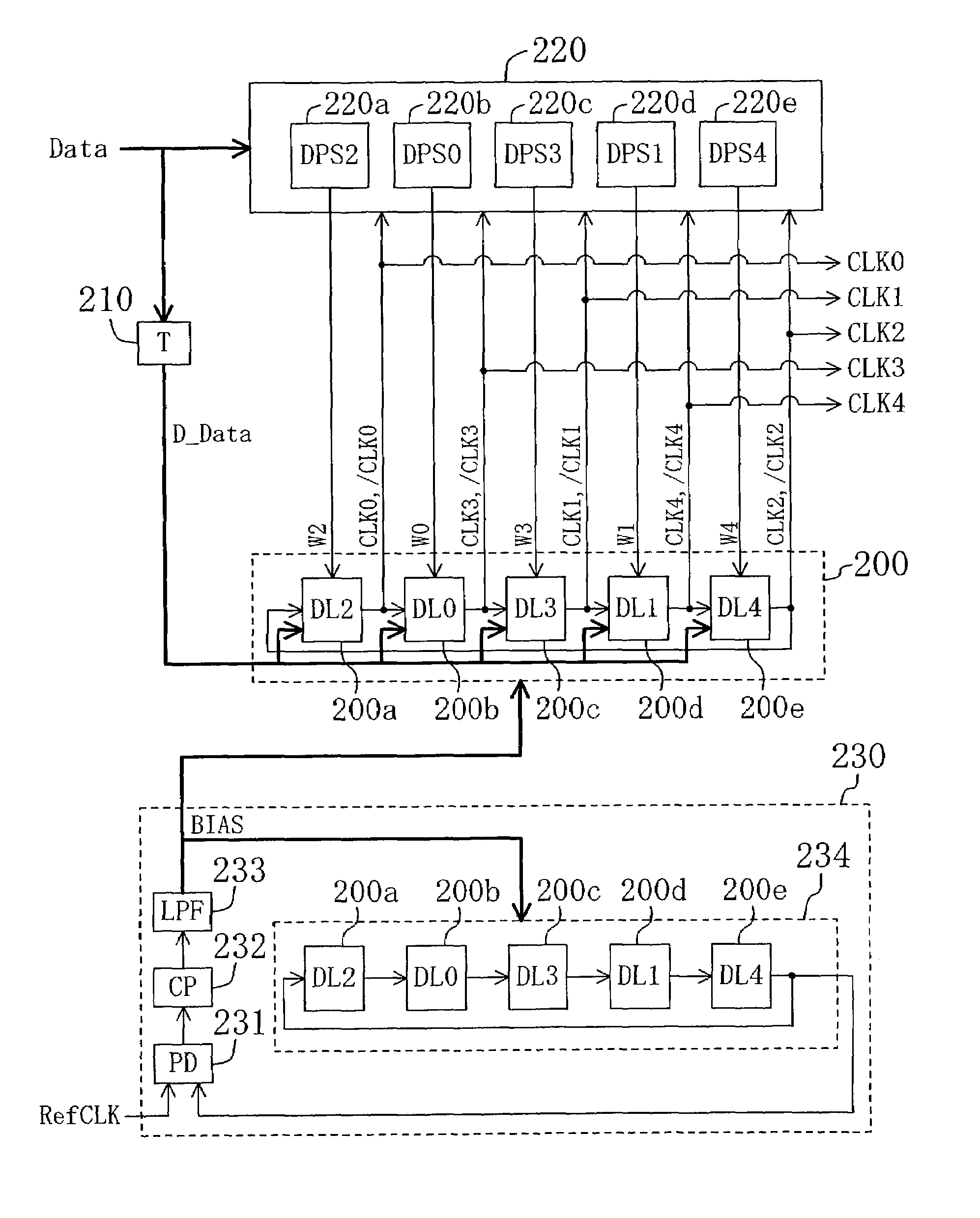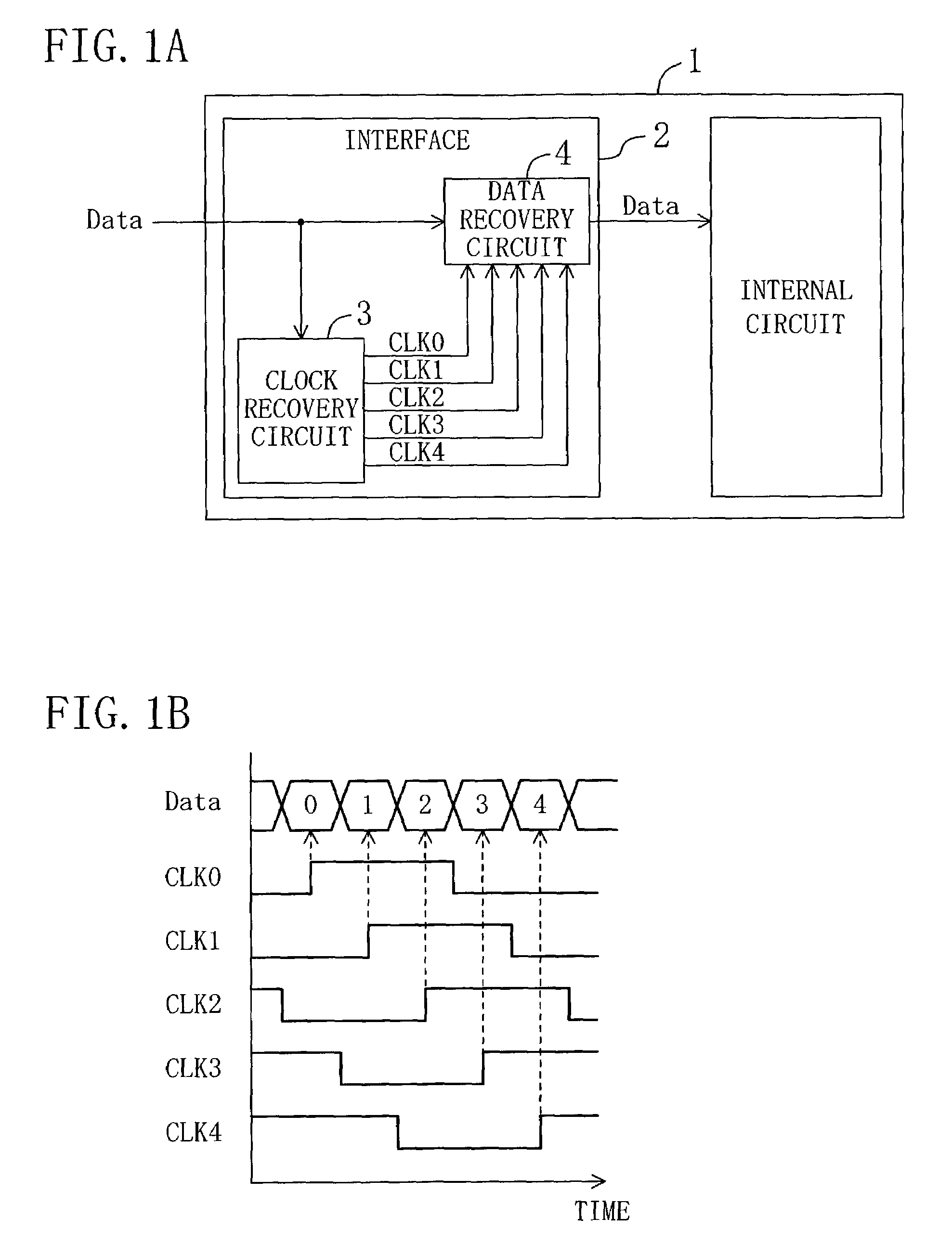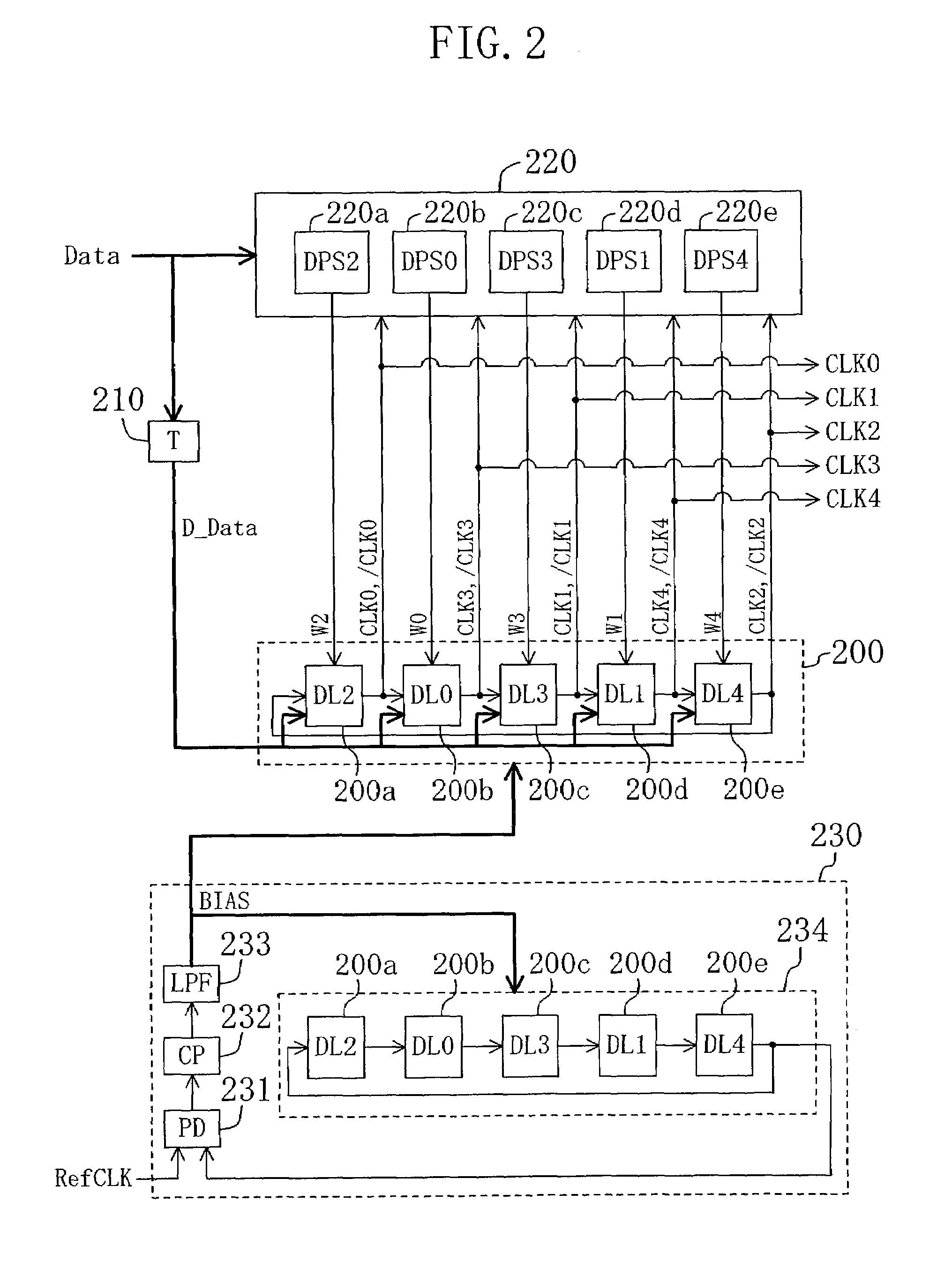Clock recovery circuit
a clock recovery and clock technology, applied in pulse generators, pulse manipulation, pulse techniques, etc., can solve the problems of not being able to achieve high-speed data communication, clock recovery circuits are not suitable for superfast data transmission, and cannot be precisely received on the receiver side. , to achieve the effect of facilitating clock frequency and higher-rate data transmission
- Summary
- Abstract
- Description
- Claims
- Application Information
AI Technical Summary
Benefits of technology
Problems solved by technology
Method used
Image
Examples
embodiment 1
[0056]FIG. 1A shows a schematic configuration of electronic communication equipment in Embodiment 1 of the present invention. In this electronic communication equipment, denoted by 1, an input data signal Data from outside is supplied to an internal circuit via an interface 2. The interface 2 includes a clock recovery circuit 3 and a data recovery circuit 4. The clock recovery circuit 3 extracts multiphase clocks CLK0 to CLK4 synchronizing the input data signal Data from the input data signal Data. The phase interval (phase difference) of the multiphase clocks CLK0 to CLK4 is equal to the data width defined by the data rate of the input data signal Data. The data recovery circuit 4 recovers the input data signal Data with the multiphase clocks CLK0 to CLK4 sent from the clock recovery circuit 3. Specifically, as shown in FIG. 1B, the data recovery circuit 4 recovers one data unit of the input data signal Data at each edge of the phases of the multiphase clocks CLK0 to CLK4. The inpu...
embodiment 2
[0094]In the clock recovery circuit of Embodiment 1, the mask window is desirably generated so that a transition point of the output of the preceding delay cell (that is, the clock to be replaced) is included in the mask window and located at the center thereof.
[0095]In Embodiment 1, however, no consideration is given to delays generated in the delay path selectors 220a to 220e during generation of the mask signals W0 to W4. For example, in the delay path selector 220e of FIG. 4A, a gate delay (delay amount tg1) is generated in the NAND circuits 303a and 303b during generation of the signals D0 and D1 from the clocks CLK0 and / CLK21 and the clocks CLK1 and / CLK2. Likewise, a gate delay (delay amount tg2) is generated in the NOR circuit 302 during generation of the mask signal W4 from the signals D1 and EN0. These delays are also generated in the delay path selectors 220a to 220d.
[0096]The influence of the delays described above is greater as the data rate of the input data signal D...
embodiment 3
[0115]FIG. 9 shows a configuration of a clock recovery circuit of Embodiment 3. The clock recovery circuit of this embodiment includes a delay circuit 210, an edge detector 220, a voltage-controlled oscillator (VCO) 500, a PLL 530, phase comparators 540a to 540e and a control circuit 550.
[0116]The VCO 500, oscillating at a frequency corresponding to a bias voltage BIAS from the PLL 530 and a bias voltage BIAS3 from the control circuit 550, includes 5-stage delay cells 500a to 500e connected in a ring. Each of the delay cells 500a to 500e reverse-delays a signal output from the preceding delay cell by a delay amount according to the bias voltage BIAS from the PLL 530 and the bias voltage BLAS3 from the control circuit 550. The outputs (CLK0, CLK3, CLK1, CLK4, CLK2) of the delay cells 500a to 500e are output outside the clock recovery circuit as multiphase clocks CLK0 to CLK4.
[0117]The PLL 530 includes a phase comparator 231, a charge pump 232, a low-pass filter 233 and a voltage-cont...
PUM
 Login to View More
Login to View More Abstract
Description
Claims
Application Information
 Login to View More
Login to View More - R&D
- Intellectual Property
- Life Sciences
- Materials
- Tech Scout
- Unparalleled Data Quality
- Higher Quality Content
- 60% Fewer Hallucinations
Browse by: Latest US Patents, China's latest patents, Technical Efficacy Thesaurus, Application Domain, Technology Topic, Popular Technical Reports.
© 2025 PatSnap. All rights reserved.Legal|Privacy policy|Modern Slavery Act Transparency Statement|Sitemap|About US| Contact US: help@patsnap.com



